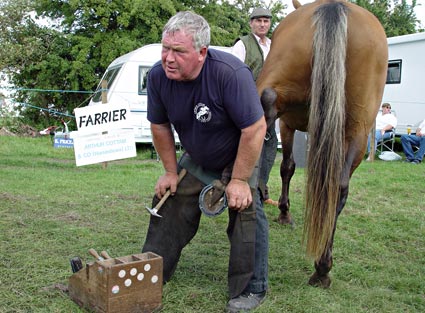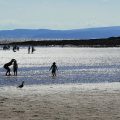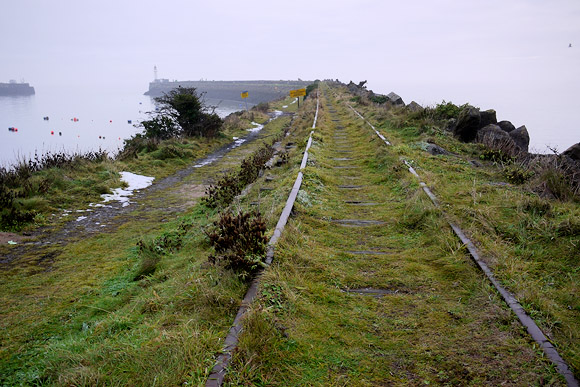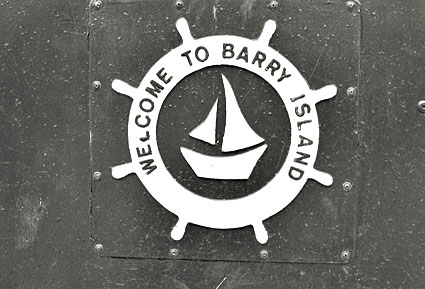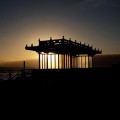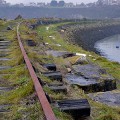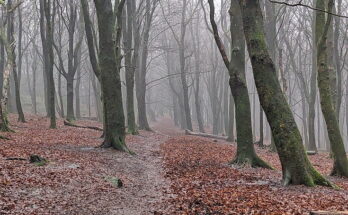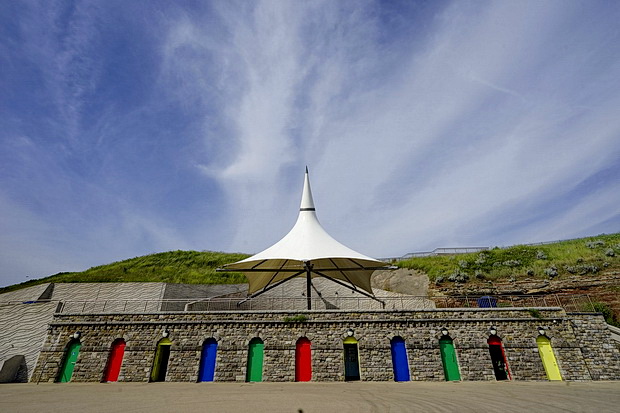
Once a hugely popular tourist destination, Barry Island’s glory days are long behind it, although it’s recently enjoyed some rather splendid improvements along the sea front.
Incidentally, Barry Island (Ynys y Barri) isn’t actually an island, thanks to an 1896 railway causeway creating a permanent connection to the mainland.
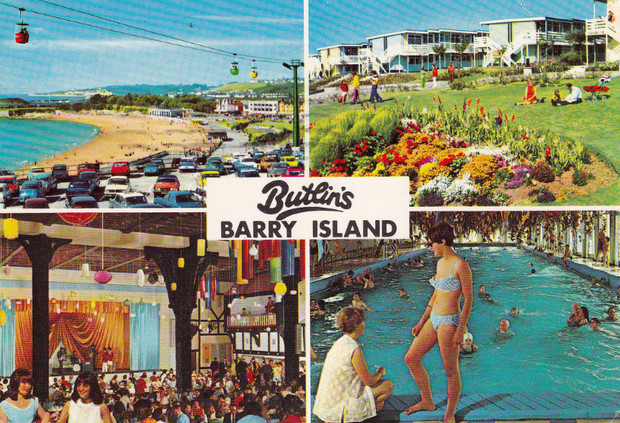
As a child, I was a regular visitor to the island, which also had its own Butlin’s holiday camp for a short while.
A trip to Barry Island proved to be the inspiration for Billy Butlin’s immense holiday empire, as a result of him enduring a miserable stay after being locked out of his B&B all day by his landlady.
What was to become the last-built and smallest of the Butlins Holiday Camps came to Barry Island in 1965. Billy Butlin took out a 99-year lease on the headland at Nell’s Point in 1966. Building work began there in the winter and the gates opened to campers on 18 June 1966.
Barry Island holiday camp contained all the tried and tested Butlins ingredients: the famous Butlins Redcoats, funfair, early morning wake up with Radio Butlin, dining hall, indoor and outdoor swimming pools, ballroom; boating lake, tennis courts, sports field (for the three legged and egg and spoon races and the donkey derby), table tennis and snooker tables, amusement arcade, medical centre, theatre, arcades of shops and the Pig and Whistle Showbar.
A 430 metres (1,410 ft) Chairlift system was opened in 1967. There were 800 chalets, all very basic, ‘no-frills’ and designed to modern 1960s standards, which, on the outside, meant wooden panels and flat roofs.
The camp continued to be enormously successful throughout until the 1980s, but on 29 October 1986, Butlins announced that the camp would have no place in the company’s future and the camp would close after Christmas. The camp closed on 31 December 1986. [—]
The camp reopened in 1987 as Majestic Barry Island under the ownership of Cardiff City FC owner Rick Wright. Increasing maintenance costs and storm damage saw the camp’s final closure in November 1996.
The site was later demolished and the land sold off for housing.
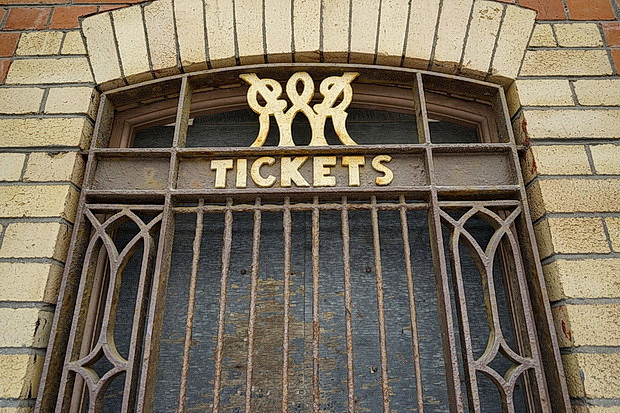
The terminus of a 9¼ mile long line from Cardiff Central, Barry Island railway station was opened in 1896 to serve the newly opened Pleasure Park. Although the station facilities have been hugely reduced, the original Great Western Railway iron ticket grill survives.
At its peak, the station was phenomenally busy, with between 80,000 and 100,000 visitors arriving at the Island on most peak-time August Bank Holiday Mondays in the 20s and 30s.
After the 1926 General Strike, reports in the local and national press described the scenes over the 1927 August Bank Holiday weekend at Barry Island as ‘organised chaos’ .
It was estimated that in excess of 120,000 arrived at the island with packed trains arriving and leaving Barry Island Station at five-minute intervals. In excess of 75 special excursion trains, each carrying an estimated 500-600 passengers arrived from Cardiff’s Riverside Station during that morning and early afternoon.
A report in the local press on one Bank Holiday Monday, when an estimated crowd of over 150,000 arrived at the Island, described the scene as follows:
“When it was time for visitors to leave the Island a queue started to form just before 6 pm and by 9.30 pm was still over a quarter of a mile long, it snaked around the fairground with people waiting to board their trains.
Excursionists from the Midlands and places other than Cardiff and the Valleys using one entrance and boarding their non-stop return trains and “Locals” having to wait for a space to return to Cardiff.” [—]
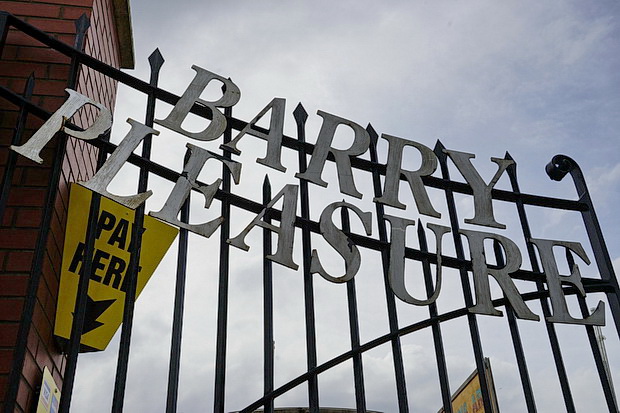
Once dominated by its famous Scenic Railway (demolished 1973), Barry Island Pleasure Park is in a rum old state these days.
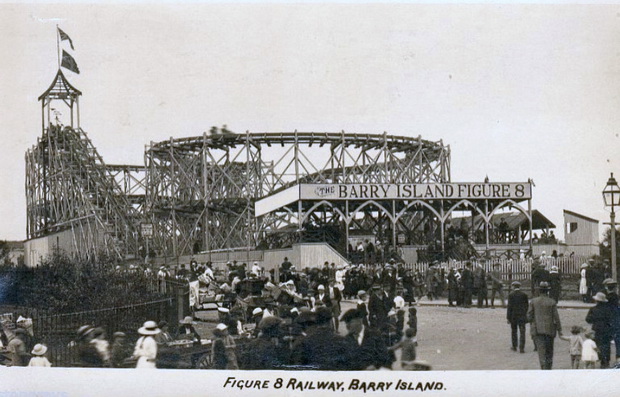
Edwardian view.
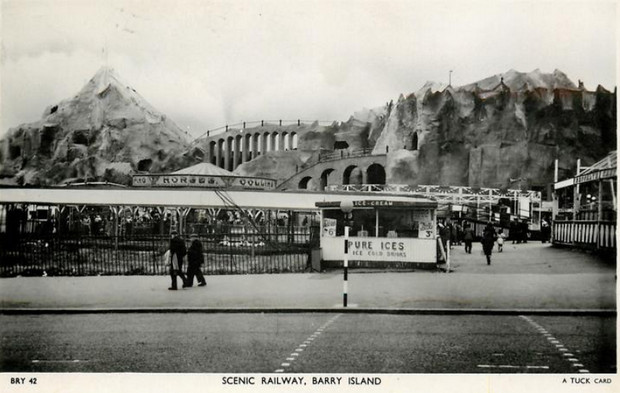
Scenic Railway view. I can remember the structure being painted a bright blue.
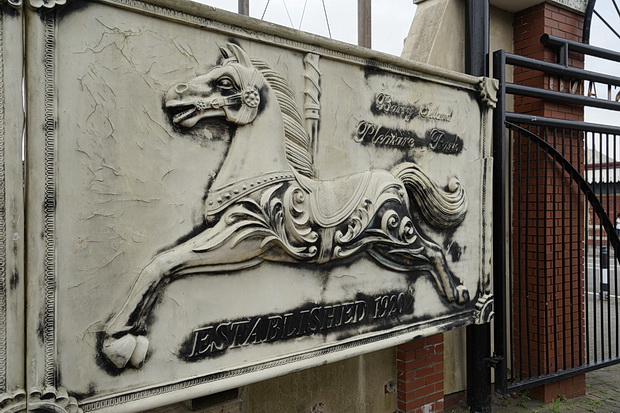
Into the park.
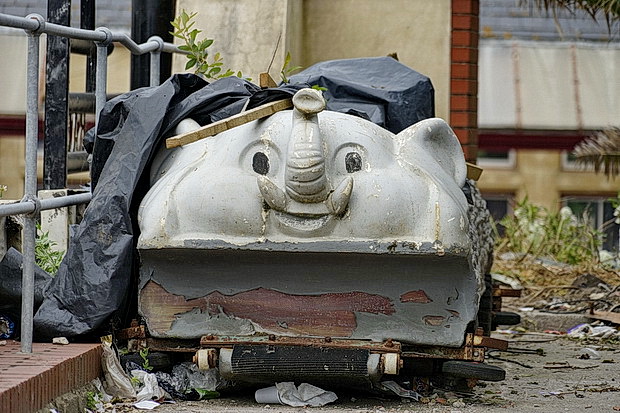
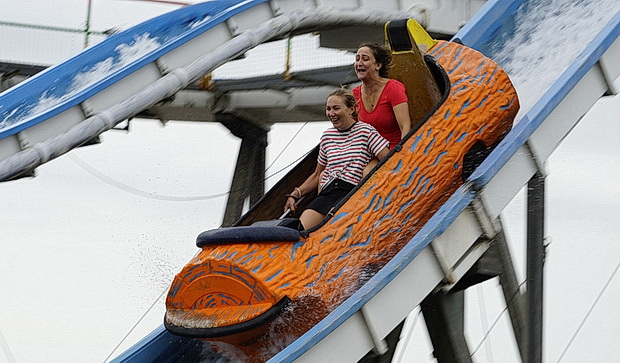
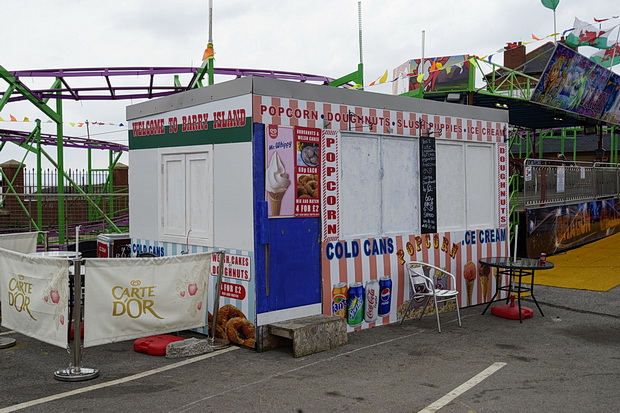
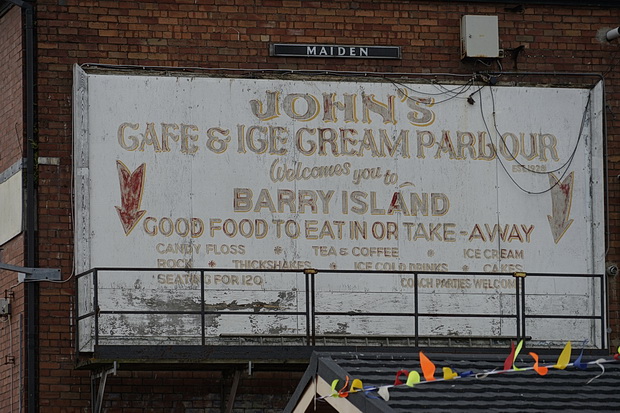
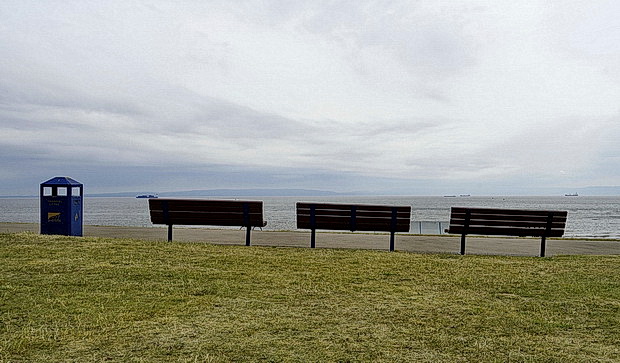
To the sea!
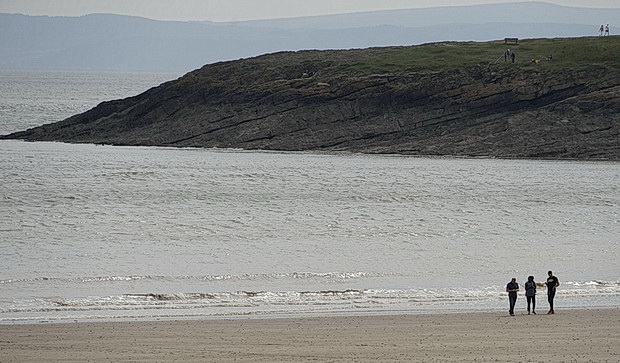
Barry’s stretch of coast, on the Bristol Channel, has the world’s second highest tidal range of 15 metres (49 ft) – second only to Bay of Fundy in Eastern Canada.
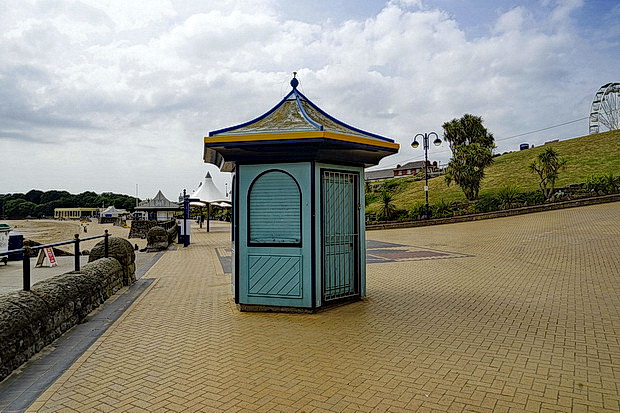
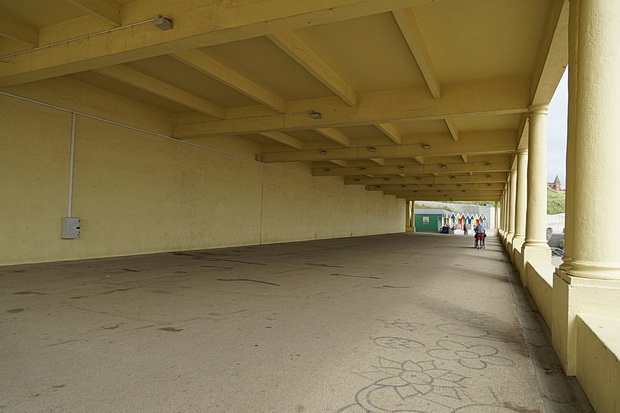
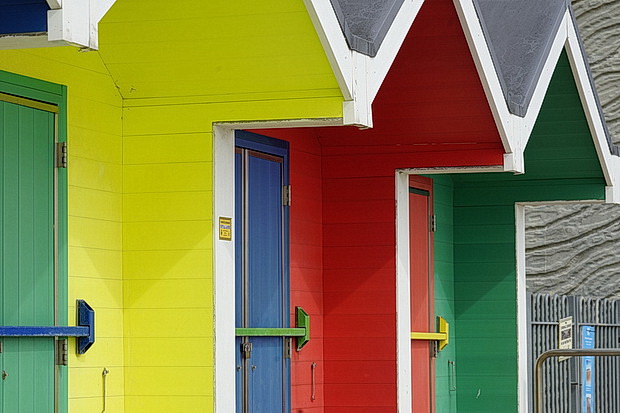
It was great to see some investment coming to Barry Island – these smart beach huts weren’t here last time I visited.
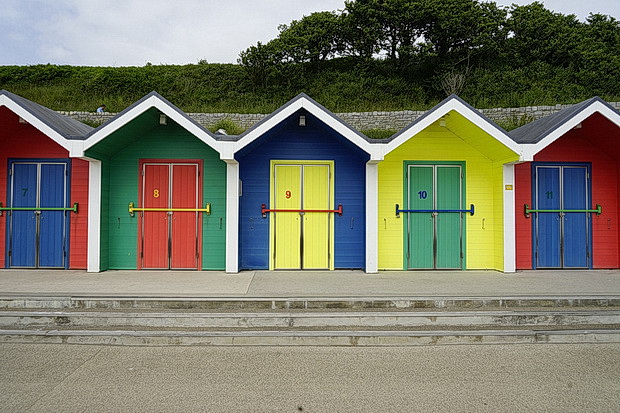
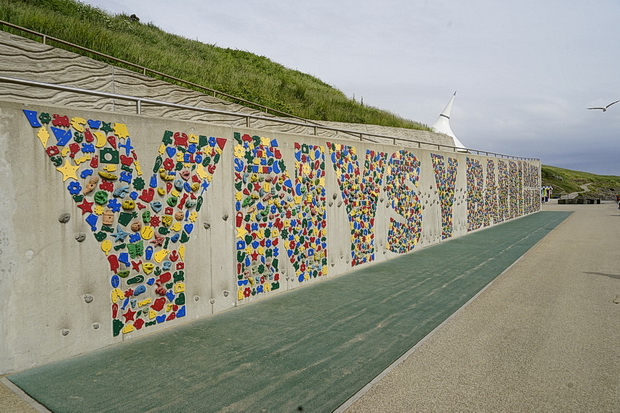
Another new attraction, with this climbing wall spelling out the name Ynys y Barri (Barry Island in Welsh).
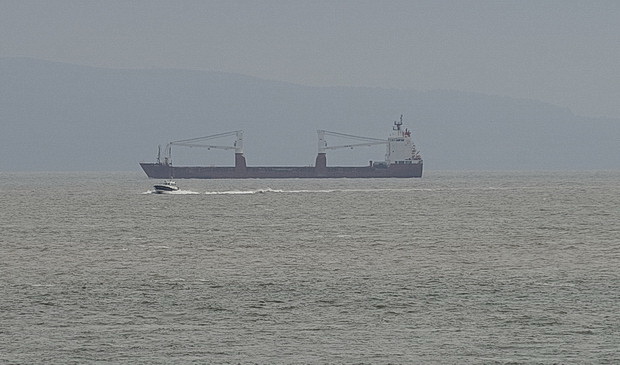
Ship out at sea in the Bristol Channel.
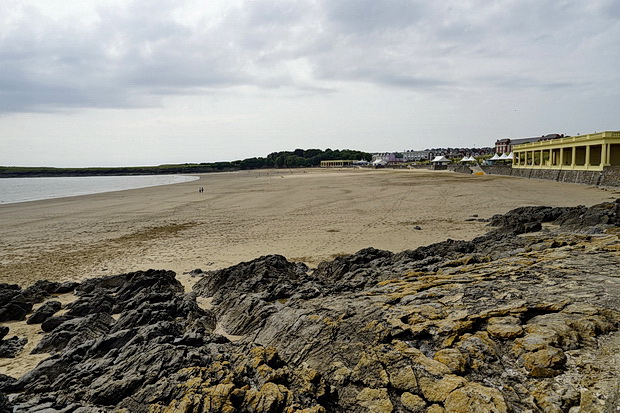
Barry Island has a lovely sandy beach.
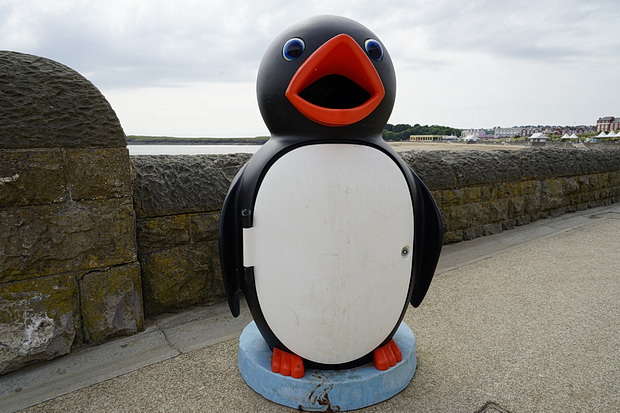
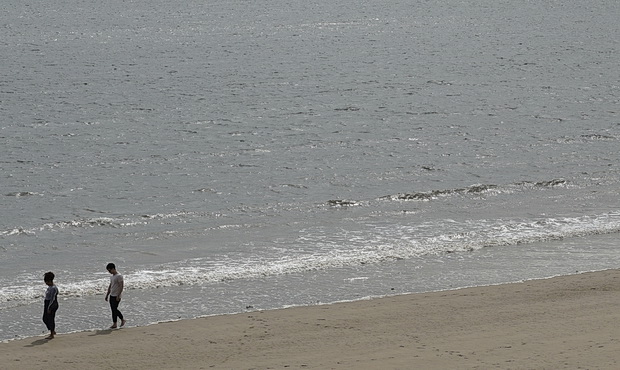
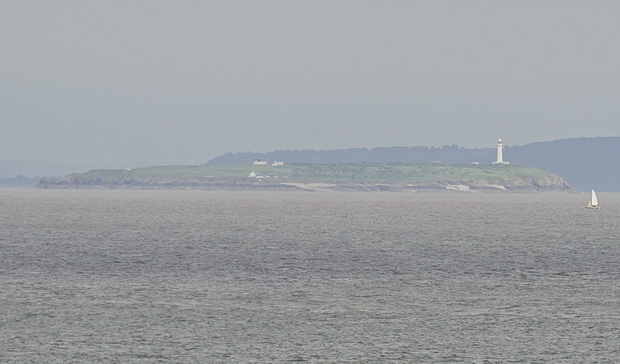
Flat Holm (Ynys Echni) as seen from Barry Island.
Featuring the most southerly point of Wales, Flat Holm is a limestone island lying in the Bristol Channel with a long history of occupation, dating at least from Anglo-Saxon and Viking age.
Dominated by a Trinity House lighthouse built in 1737, the island is a Site of Special Scientific Interest and Local Nature Reserve – and it has its own place in broadcast history:
On 13 May 1897, a 22-year-old Italian inventor named Guglielmo Marconi, assisted by a Cardiff Post Office engineer named George Kemp, transmitted the first wireless signals over open sea from Flat Holm to Lavernock Point near Penarth.
Having failed to interest the Italian government in his project, Marconi brought his telegraphy system to Britain. He erected a 34m high transmitting mast on Flat Holm as well as a 30m receiving mast at Lavernock Point. The first trials failed, but on 13 May the mast was raised to 50m and the signals were received clearly.
The message sent by Morse Code was “Are you ready?”; the original paper Morse slip, signed by both Marconi and Kemp, is now in the National Museum of Wales. [—]
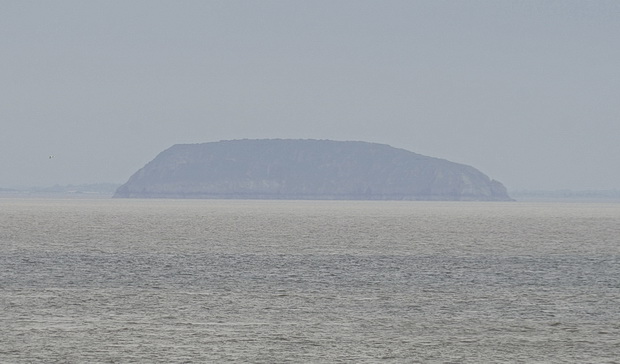
Neighbouring Steep Holm (Ynys Rhonech) belongs to the English. [—]
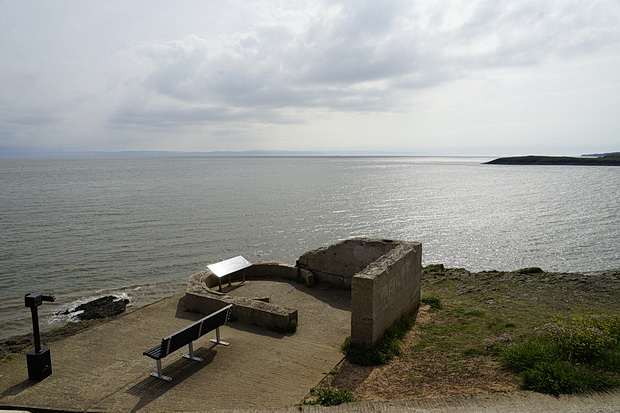
Waling along the coastal path.

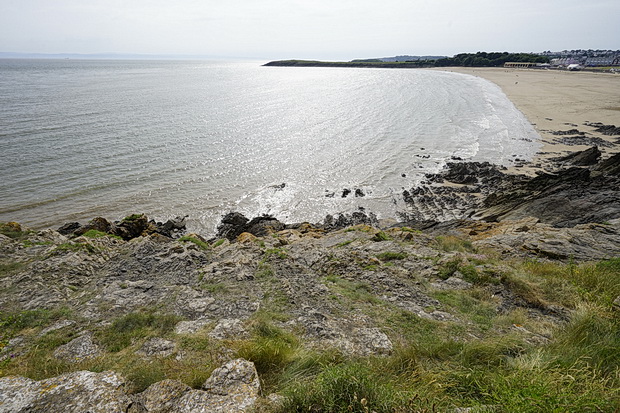
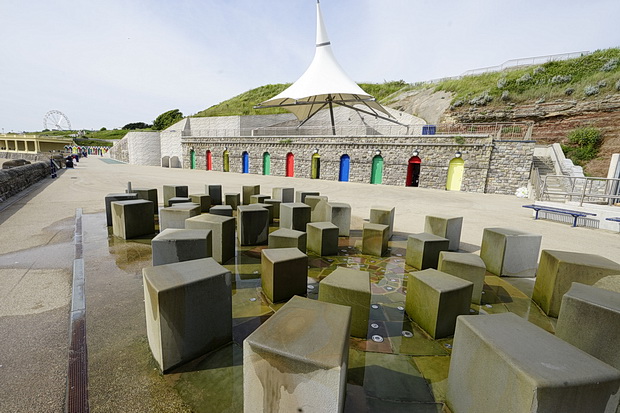
New fountain installation and tent shelter.
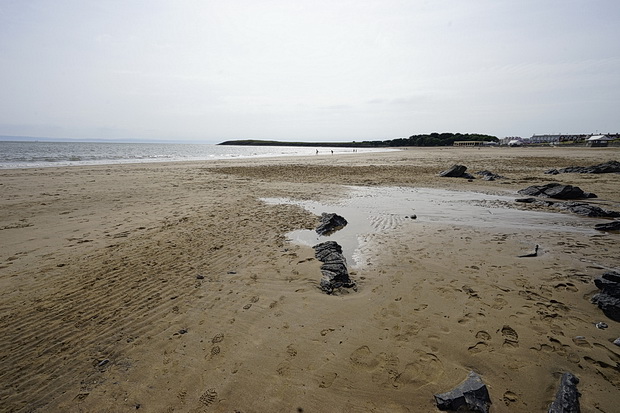
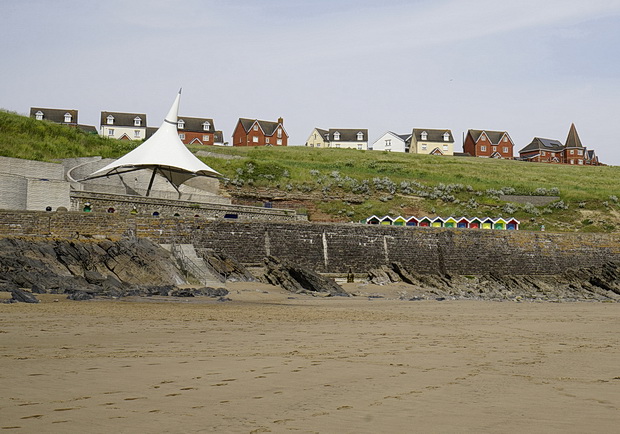
The site of the former Butlin’s on the hill.
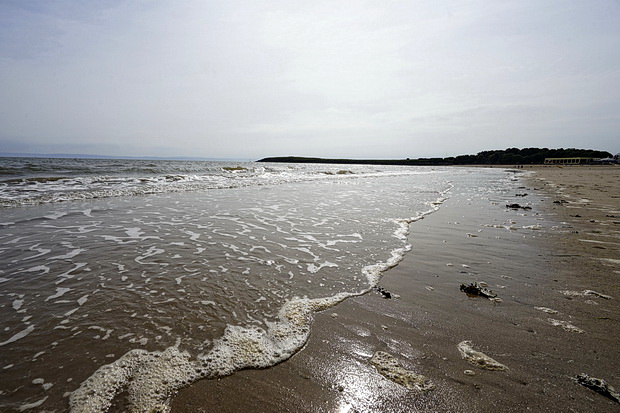
It was a cracking early summer’s afternoon.
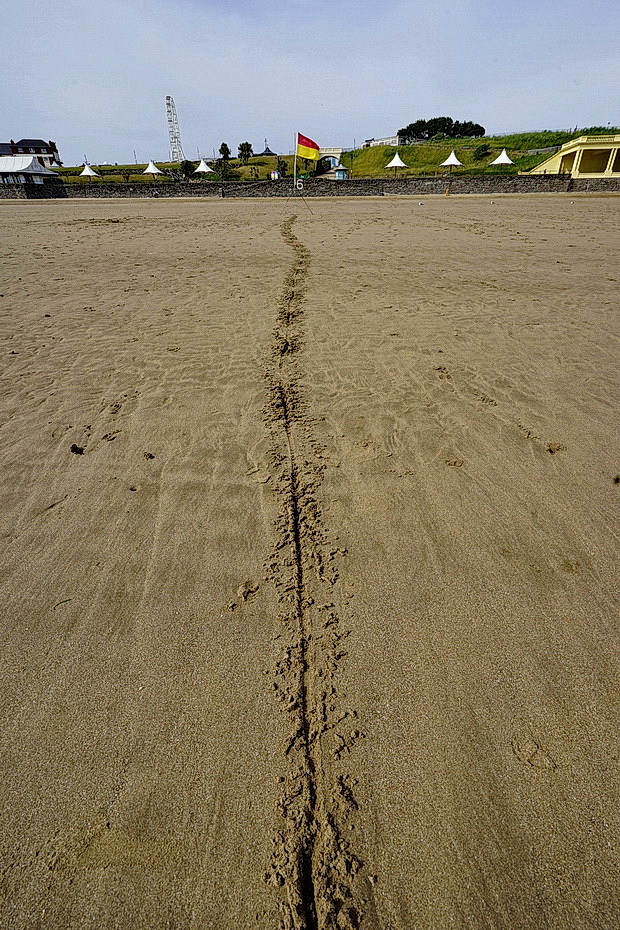
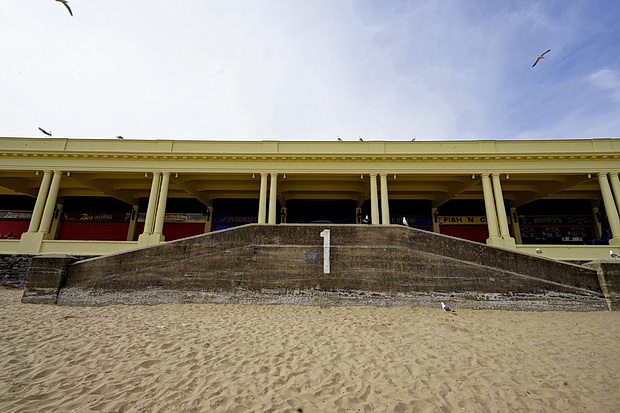
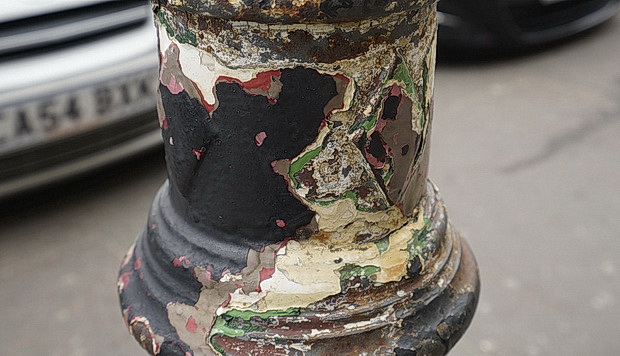
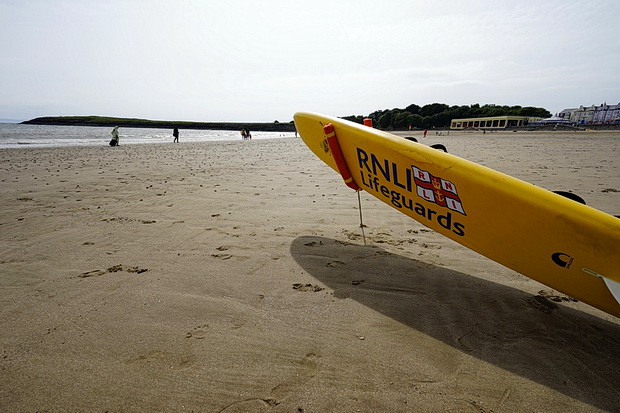
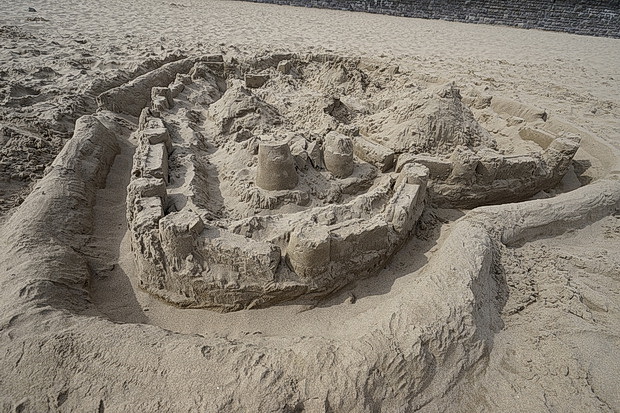
Welsh fortifications.
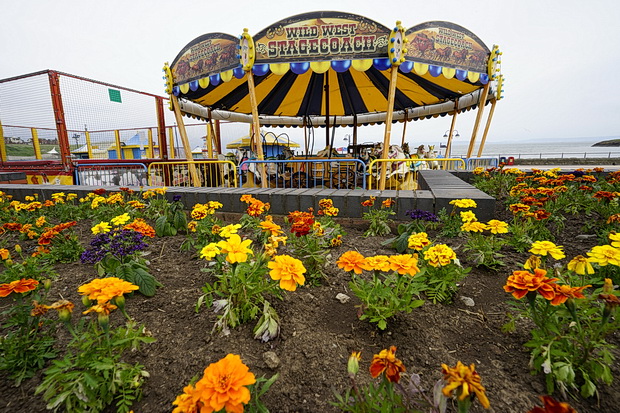
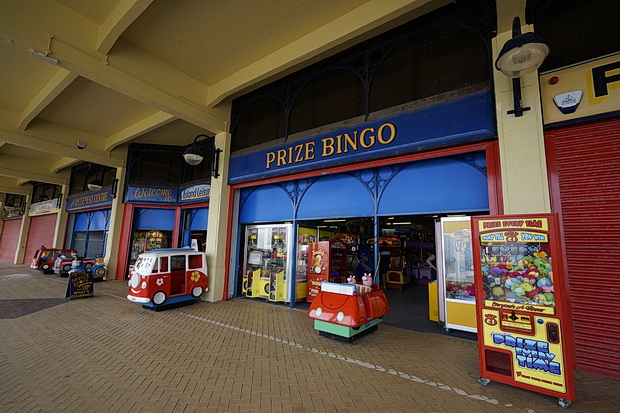
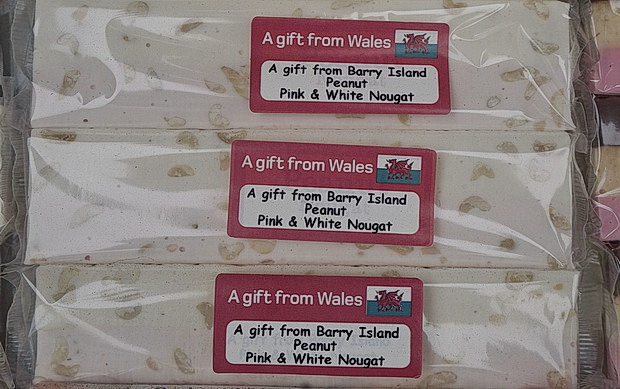
Tidy gifts.

All your seaside needs catered for.
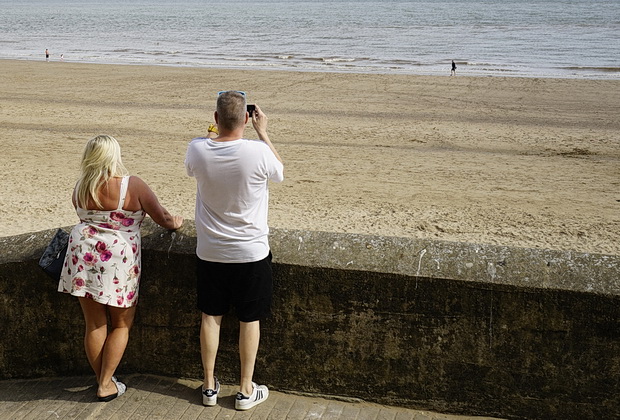
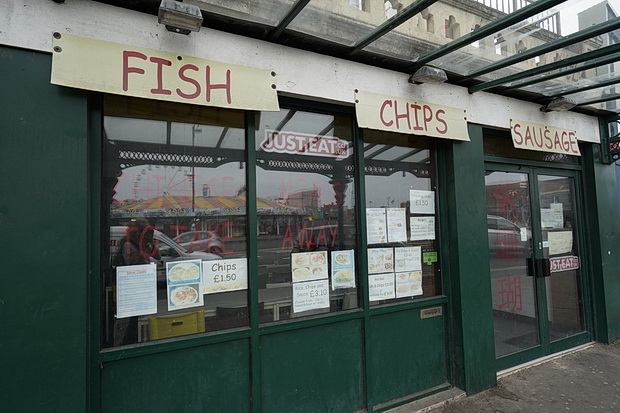
Fish. Chips. Sausages. It’s got the lot.

